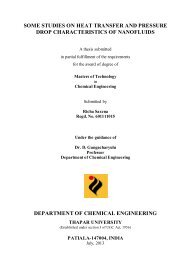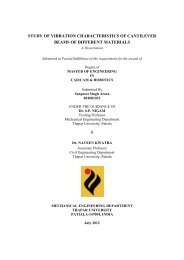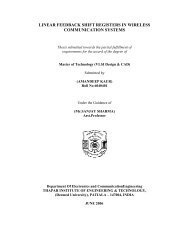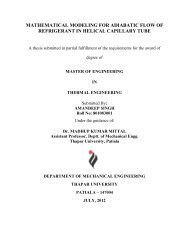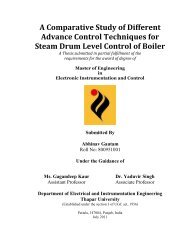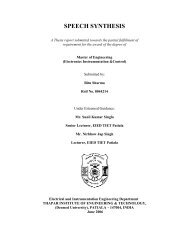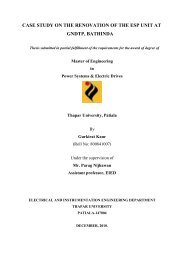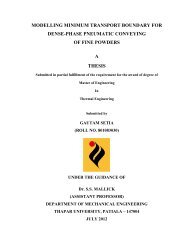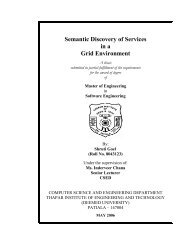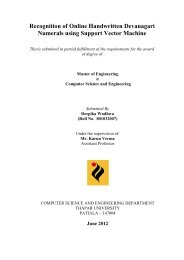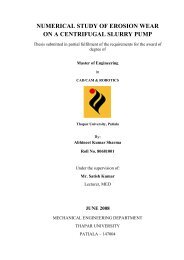from indigenous fermented foods and human gut ... - Thapar University
from indigenous fermented foods and human gut ... - Thapar University
from indigenous fermented foods and human gut ... - Thapar University
Create successful ePaper yourself
Turn your PDF publications into a flip-book with our unique Google optimized e-Paper software.
54<br />
Chapter III Material <strong>and</strong> methods<br />
indicates presence of ammonia. Cronobacter sakazakei MTCC 19111was used as an arginine<br />
positive control strain.<br />
3.4.4 Presence of meso-diaminopimelic acid (mDAP) in the cell walls<br />
Overnight grown culture (1.5 ml) was centrifuged at 7,500 x g for 10 min in<br />
eppendrof tubes <strong>and</strong> then resuspended in 200 μl of 4 N hydro chloric acid (HCl) <strong>and</strong><br />
hydrolysed at 100°C in a heating block overnight in tightly closed tubes. HCl was removed<br />
by gently streaming nitrogen at 40 to 50°C into the solution for 1 h. The dry residue was<br />
collected in a drop of water <strong>and</strong> spotted onto a thin layer chromatography (TLC) plate (pre-<br />
coated cellulose plastic sheets 20 cm x 20 cm, Merck, no. 5577). A mDAP st<strong>and</strong>ard (5<br />
mg/ml) was also spotted as a positive control. The ascending one-dimensional<br />
chromatography was run in a solvent solution containing methanol: pyridine: 10 N HCl:<br />
water in the ratio of 32:4:1:7. After drying, the chromatograms were developed with an acidic<br />
ninhydrin spray (0.5 % w/v ninhydrin in 1-butanol:acetic acid [13:1] <strong>and</strong> heated at 100°C in<br />
oven for 5 min. mDAP was characterised by a low R f (retention factor) <strong>and</strong> an olive green<br />
colour which changes to yellow with time <strong>and</strong> light exposure.<br />
3.4.5 Determination of lactic acid enantiomers produced<br />
Lactic acid enantiomers were determined using an enzymatic kit (API System;<br />
BioMerieux, Marcy I’Etoile, France) based on the oxidation of D-lactate or L-lactate into<br />
pyruvate in the presence of NAD +<br />
, which in turn reduces to NADH, by the corresponding<br />
enzymes, D-lactate-dehydrogenase or L-lactate-dehydrogenase.<br />
The equilibrium of these reactions lies on the side of lactate. By trapping pyruvate in a<br />
subsequent reaction catalysed by glutamate pyruvate transaminase in the presence of L-<br />
glutamate, the equilibrium can be shifted in favour of pyruvate <strong>and</strong> NADH. The amount of<br />
NADH formed in the mentioned reactions is stoichiometric to the amounts of lactic acid<br />
oxidized by the lactate-dehydrogenases. The increase of NADH was determined



